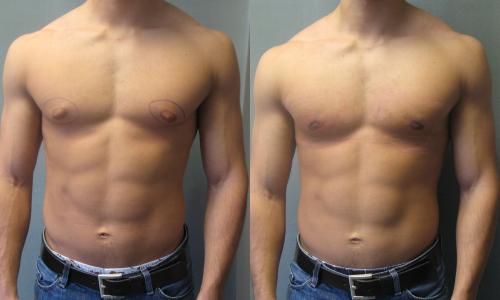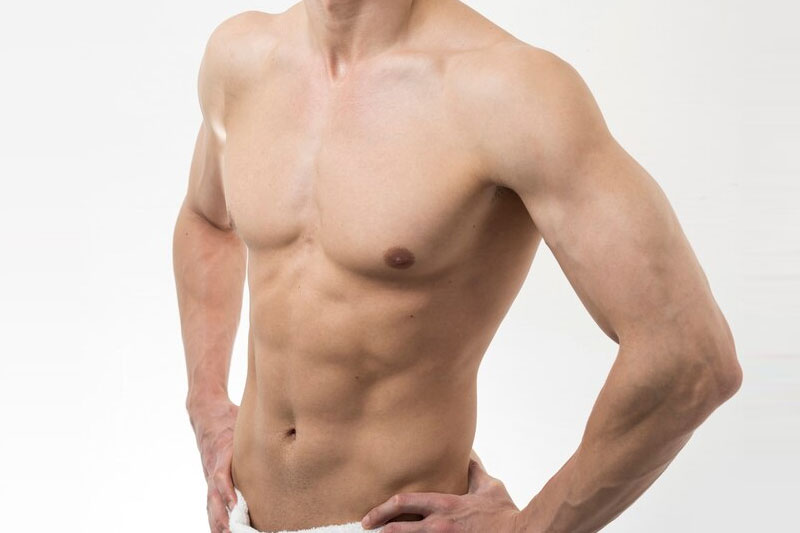
puffy nipples
Table of Contents
Best Understand the myths around puffy nipples
Introduction:
Puffy nipples are a common concern for many individuals, affecting both men and women. Despite their prevalence, there are numerous myths and misconceptions surrounding this condition. Some people believe puffy nipples are solely a result of poor diet or lack of exercise, while others think they indicate an underlying health issue.
In this article, we will debunk the most common myths about puffy nipples, explore their actual causes, and discuss possible treatments. By the end, you’ll have a clear, fact-based understanding of this condition.
What Are Puffy Nipples?
Puffy nipples refer to a condition where the areola (the darker area around the nipple) appears swollen or raised, giving a “puffy” appearance. This can occur in both men and women and may be temporary or persistent puffy nipples.
Common Characteristics Puffy Nipples :
- The nipple or areola appears swollen or protruding.
- The puffiness may be more noticeable in certain conditions (cold, stimulation, hormonal changes).
- In some cases, the puffiness is accompanied by tenderness or sensitivity.
Myth #1: Puffy Nipples Only Affect Overweight People
Fact: While excess body fat can contribute to the appearance of puffy nipples, they are not exclusive to overweight individuals. Many people with a healthy BMI still experience puffy due to hormonal imbalances, genetics, or glandular tissue development.
Why This Myth Exists:
- Fat accumulation in the chest area can make nipples appear puffier.
- Weight loss does not always eliminate puffy nipples, especially if the cause is glandular.
Myth #2: Puffy Nipples Are Always a Sign of Gynecomastia (in Men)

Fact: Gynecomastia (male breast enlargement) is a common cause of nipples in men, but not the only one. Other factors include:
- Pubertal Hormonal Changes – Many teenage boys experience temporary nipples due to fluctuating hormones.
- Pseudogynecomastia – Fat accumulation without glandular growth.
- Medications & Steroids – Certain drugs can cause nipple swelling.
For Women: nipples are often linked to hormonal cycles, pregnancy, or breastfeeding rather than gynecomastia.
Myth #3: Puffy Nipples Only Men Get Puffy
Fact: Women also experience nipples, often due to:
- Hormonal fluctuations (menstruation, pregnancy, menopause)
- Breastfeeding or milk duct changes
- Fibrocystic breast changes (benign lumps causing swelling)
Unlike men, women’s nipples are rarely a cause for medical concern unless accompanied by pain or unusual discharge.
Myth #4: Exercise Alone Can Fix
Fact: While chest exercises (like push-ups and bench presses) can strengthen pectoral muscles, they do not directly reduce nipples caused by glandular tissue or hormonal issues nipples.
When Exercise Helps:
- If the puffiness is due to excess fat, weight loss may reduce appearance.
- Building chest muscles can improve overall chest contour.
When Exercise Doesn’t Help:
If the cause is gynecomastia or hormonal, medical treatment may be needed.
Myth #5:Puffy Nipples are Permanent and Untreatable
Fact: Many cases of nipples are temporary (especially during puberty). For persistent cases, treatments include:
Non-Surgical Options:
- Hormone Therapy (if caused by imbalances)
- Compression Garments (to minimize appearance)
Surgical Options:
- Liposuction (for fat-related puffiness)
- Gland Excision (for gynecomastia-related cases)
Myth #6: Puffy Nipples Indicate Breast Cancer
Fact: While breast cancer can cause nipple changes, nipples alone are rarely a sign of malignancy. However, consult a doctor if you notice:
- Hard lumps
- Nipple discharge (especially bloody)
- Sudden, unexplained changes
When Should You Be Concerned?
Most cases of puffy nipples are benign, but medical advice is recommended if:
✅ The puffiness is painful or increasing.
✅ There is discharge (other than breast milk).
✅ One nipple changes suddenly.
How to Reduce Nipples Naturally: Diet, Exercise, and Lifestyle Tips”
Outline:
- Introduction – Why natural methods are preferred by some.
- Dietary Changes – Foods that balance hormones (e.g., flaxseeds, cruciferous veggies).
- Effective Exercises – Chest workouts that may help (push-ups, dumbbell presses).
- Lifestyle Adjustments – Reducing alcohol, avoiding estrogen-mimicking chemicals.
- When Natural Methods Aren’t Enough – Signs you may need medical intervention.
- Conclusion – Patience and consistency are key.
“Puffy Nipples in Men: Causes, Treatments, and When to See a Doctor”
Outline:
- Introduction – Brief explanation of nipples in men.
- Common Causes – Hormonal imbalances (gynecomastia), puberty, obesity, medications.
- Myths vs. Facts – Debunking misconceptions (e.g., “Only fat men get puffy nipples”).
- Treatment Options – Natural remedies, medications, surgery (liposuction/gland removal).
- When to Worry – Signs of hormonal disorders or breast cancer.
- Conclusion – Encouragement to seek medical advice if concerned.
“Puffy Nipples in Teenagers: Is It Normal or a Cause for Concern?”
Outline:
- Introduction – Why teens commonly experience nipples.
- Puberty & Hormonal Changes – Estrogen-testosterone fluctuations.
- When It’s Temporary – Most cases resolve in 1-2 years.
- When to Seek Help – Persistent cases, pain, or asymmetry.
- Parental Guidance – How to support teens dealing with body image issues.
- Conclusion – Reassurance that it’s usually a passing phase.
“Surgical Solutions for Puffy Nipples: What to Expect from Gynecomastia Surgery”
Outline:
- Introduction – When surgery becomes an option.
- Types of Procedures – Liposuction vs. gland excision vs. combination.
- Recovery Process – Pain, swelling, scarring, and downtime.
- Risks & Complications – Infection, uneven results, numbness.
- Cost & Insurance – Is it covered as a cosmetic or medical procedure?
“Gynecomastia in Bodybuilders: Steroid Use and Puffy Nipples Solutions”
Outline:
- Why bodybuilders are especially prone
- The estrogen-testosterone connection
- Post-cycle therapy (PCT) prevention methods
- “Gyno” reversal drugs bodybuilders use
- Surgical considerations for muscular chests
- Case study: Natural vs enhanced bodybuilders
- Maintaining results while continuing training
- Alternative supplements that don’t cause gynecomastia
“The Complete Guide to Non-Surgical Gynecomastia Treatments”
Outline:
- Introduction about avoiding surgery when possible
- FDA-approved medications (tamoxifen, raloxifene)
- Hormone balancing through diet (phytoestrogen avoidance)
- Targeted chest workouts that actually work
- Compression garments: Do they help long-term?
- CoolSculpting and other emerging technologies
- Success rates and realistic expectations
- When to accept that surgery may be needed
Final Thoughts:
Nipples are a common and often misunderstood condition. They can result from hormonal changes, weight fluctuations, or natural anatomy—not just poor health or lack of exercise. Understanding the real causes nipples helps in seeking the right treatment, whether it’s lifestyle adjustments, medical therapy, or surgery.
If you’re concerned about nipples, consult a healthcare provider to rule out underlying conditions puffy nipples. Remember, in most cases, they are a normal variation and nothing to worry about.
ALSO READ:
The Ultimate Guide to Shiny Nails: Natural Tips, Products, and Everyday Care
Best Understanding Swelling of the Roof of the Mouth 2025
How to Find Gluten Free Restaurants Near Me: A Step-by-Step Guide 2025
Best 10 Creative Lemon Balm Recipe Ideas 2025
Best 10 Cupping Therapy Near Me Centers in Karachi: Your Complete Guide 2025
Kratom Near Me: Find Top-Rated Vendors in Your Area 2025
Best 5 Unsweetened Oat Milk Fits into Your Lifestyle 2025
10 Amazing Uses of Organic Castor Oil You Need to Know
Best Swelling of the Roof of the Mouth: When to Get Assistance 2025
A Complete Guide to “Ear Cleaning Near Me” Facilities within Your Area 2025
FAQs:
What Are the Common Myths About Puffy Nipples?
Only overweight people get them – False; hormones and genetics also play a role.
They’re always caused by gynecomastia – Not true; puberty, medications, or natural anatomy can cause them.
Exercise alone can fix them – Only helps if fat-related, not glandular tissue.
They’re permanent – Many cases resolve naturally or with treatment.
They indicate cancer – Rarely; see a doctor only if painful or changing suddenly.
When Should You Be Concerned About Puffy Nipples?
Lack of awareness – Many don’t understand hormonal causes.
Social stigma – Embarrassment prevents open discussion.
Oversimplification – People assume it’s just fat or poor fitness.
Confirmation bias – Weight loss helps some, so myths spread.
Few reliable sources – Misleading fitness blogs perpetuate false claims.
Education and medical guidance are key to debunking these myths.
Where Do Myths About Puffy Nipples Come From?
These misconceptions stem from:
Cultural stereotypes – Linking chest appearance solely to fitness levels
Limited sex education – Skipping male breast development in health classes
Fitness industry myths – Overpromising “easy fixes” for profit
Social media misinformation – Viral posts oversimplifying complex conditions
Gender biases – Assuming male chest concerns are always weight-related
Lack of medical discussion – Few doctors address it unless patients ask
Proper education could correct these false beliefs.
How Can You Separate Fact from Fiction Regarding Puffy Nipples?
Consult experts – Seek advice from endocrinologists or plastic surgeons, not fitness influencers.
Understand causes – Learn hormonal vs. fat-related differences.
Research medically – Use NIH, Mayo Clinic, or WebMD instead of forums.
Track changes – Note if puffiness fluctuates with weight/hormones.
Beware quick fixes – No cream or exercise eliminates glandular tissue.
Knowledge beats misinformation. When in doubt, see a doctor.








